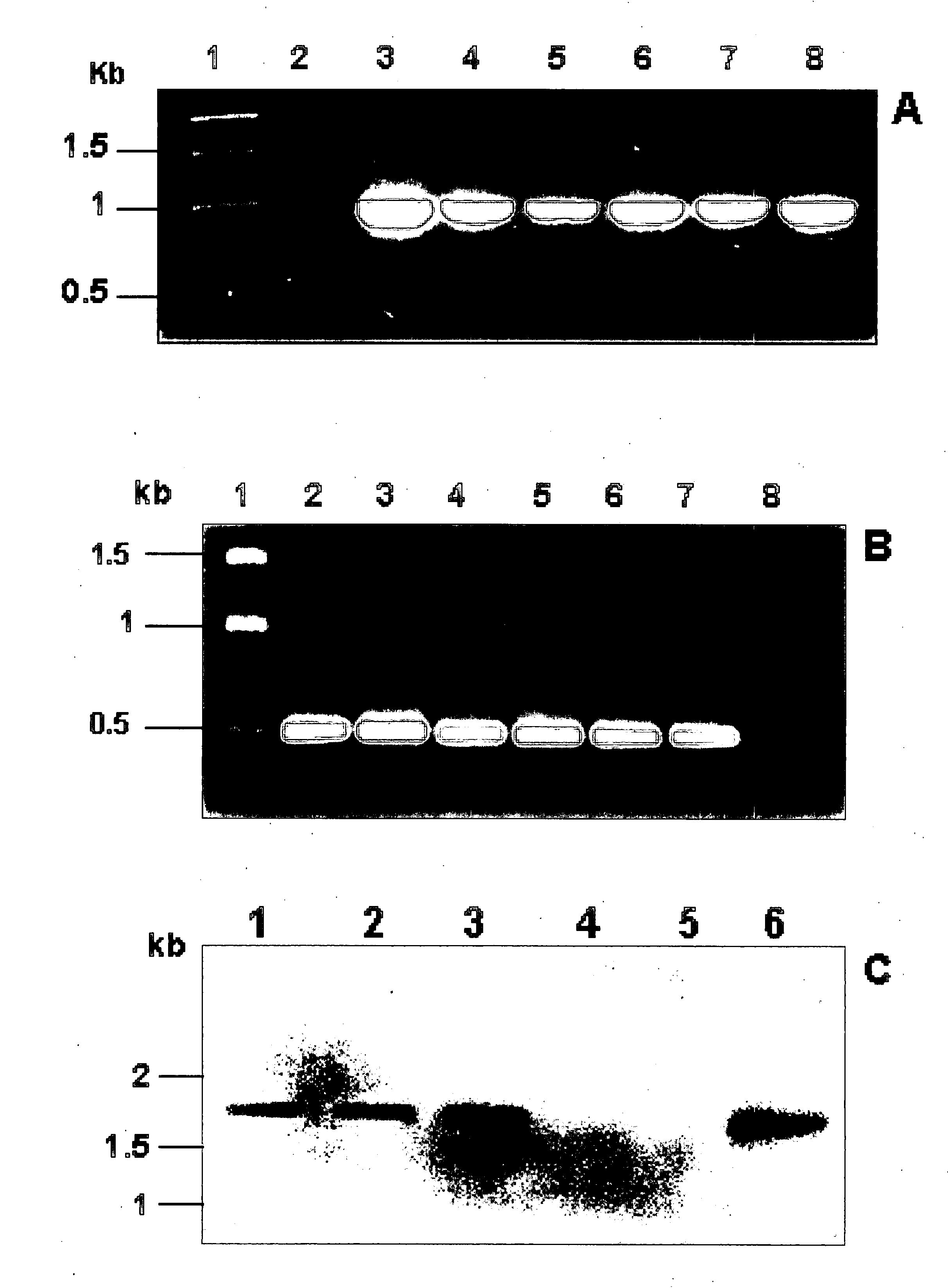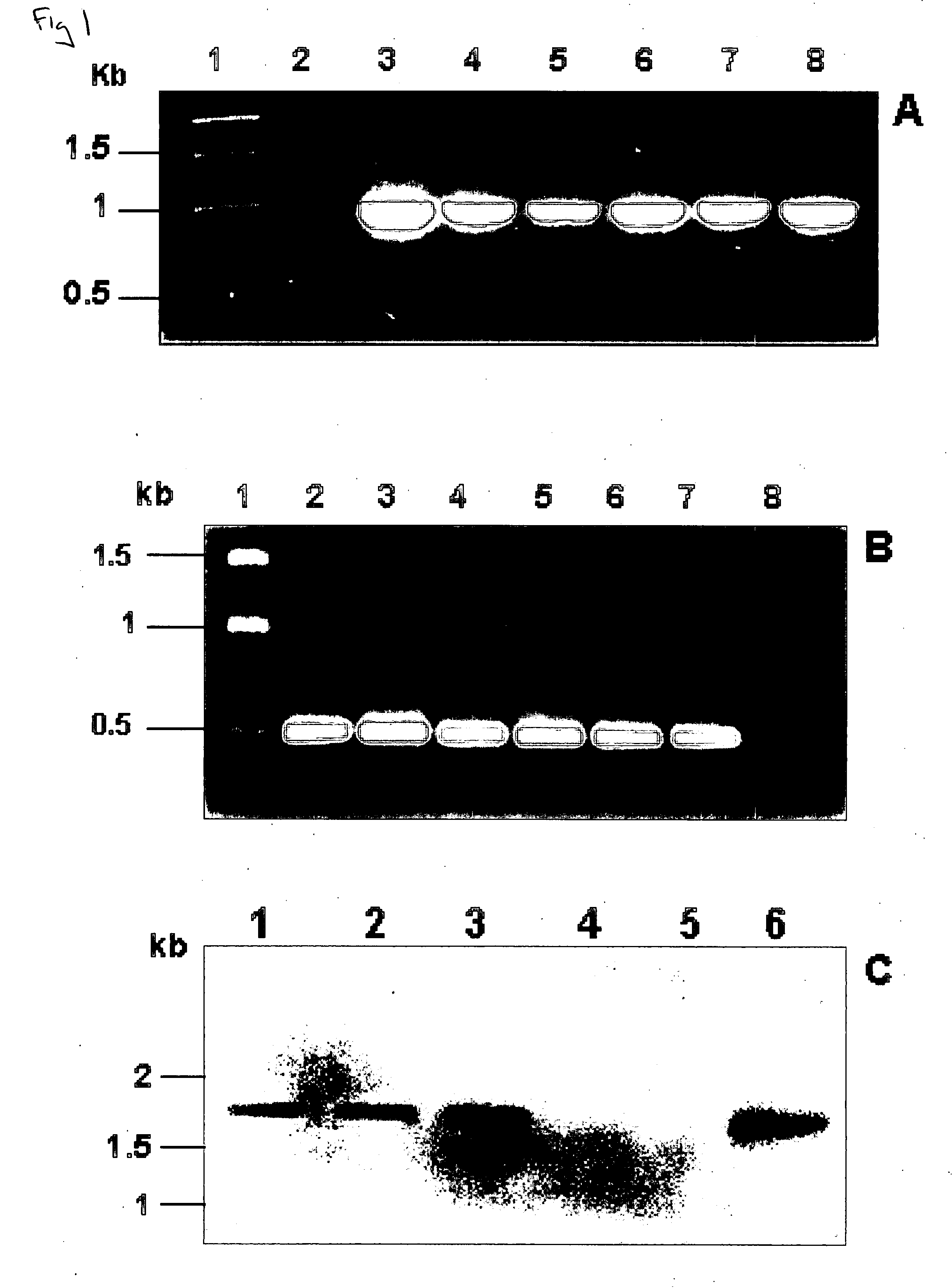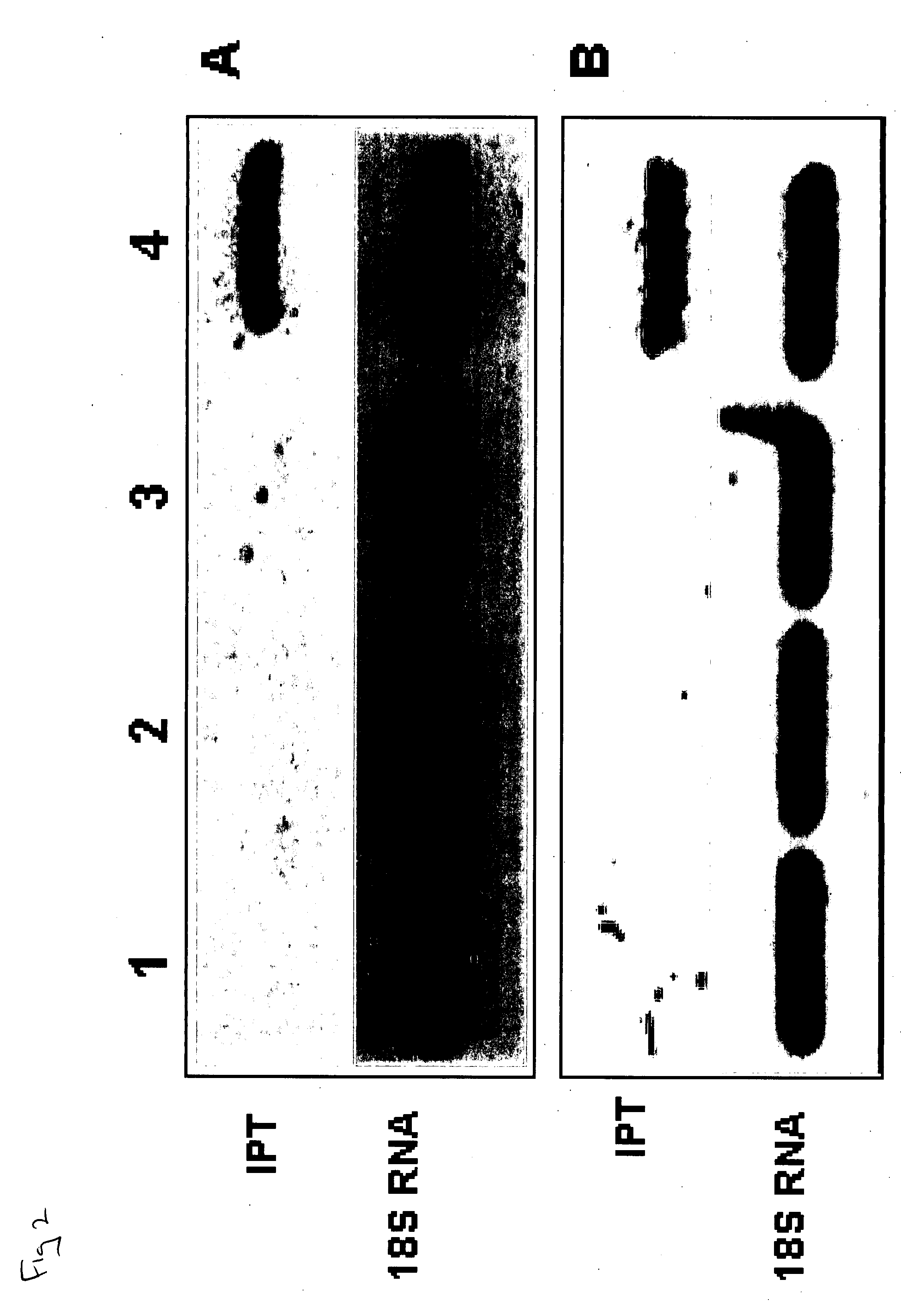Method and composition for increasing plant survival & viability under cold storage, or dark and cold storage conditions
a technology of cold storage and composition, applied in the field of composition for increasing plant survival & viability under cold storage, or dark and cold storage conditions, can solve the problems of limiting the potential for commercial production, affecting the survival rate of plants, so as to achieve high-quality phenotypes, increase survival and recovery
- Summary
- Abstract
- Description
- Claims
- Application Information
AI Technical Summary
Benefits of technology
Problems solved by technology
Method used
Image
Examples
example
Fatty Acid Composition in Double Transgenic (Cor15a-ipt×Cor15a-fad7) N. alata Lines
[0198]Fatty acid analysis of Nicotiana alata leaves revealed that 16:0, 16:3, 18:2, and 18:3 were the major fatty acid species detected (Table 5) in wild type plants, while 16:0, 16:3 and 18:3 were the major fatty acid species detected in the double transgenic lines. The level of 18:3 was higher in the double transgenic (lines 41 and 33) plants than in wild type regardless of cold induction treatment (P≦0.01 under non-inductive conditions and P≦0.001 under cold inductive conditions). In response to cold-induction temperatures, 18:3 in wild type plants showed a marginal decline (P=0.08) and the 16:0 content showed a marginal increase (P=0.08). In the double transgenic lines, the 18:3 content remained stable after exposure to cold inductive temperatures and 16:3 increased 60% in line #41 (P≦0.05) and 49% in line #33 (P≦0.01), and the level of 16:0 decreased in both lines (P≦0.05). The fatty acid species...
PUM
| Property | Measurement | Unit |
|---|---|---|
| Fraction | aaaaa | aaaaa |
| Fraction | aaaaa | aaaaa |
| Fraction | aaaaa | aaaaa |
Abstract
Description
Claims
Application Information
 Login to View More
Login to View More - R&D
- Intellectual Property
- Life Sciences
- Materials
- Tech Scout
- Unparalleled Data Quality
- Higher Quality Content
- 60% Fewer Hallucinations
Browse by: Latest US Patents, China's latest patents, Technical Efficacy Thesaurus, Application Domain, Technology Topic, Popular Technical Reports.
© 2025 PatSnap. All rights reserved.Legal|Privacy policy|Modern Slavery Act Transparency Statement|Sitemap|About US| Contact US: help@patsnap.com



